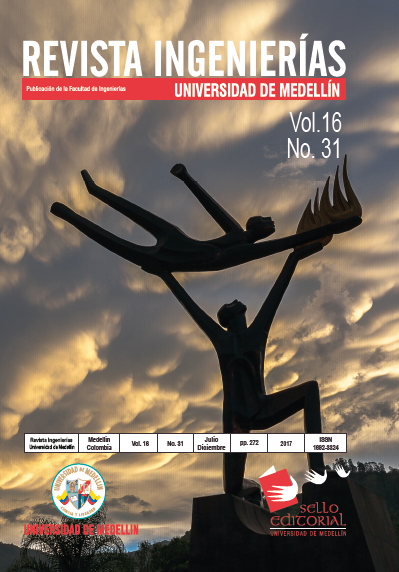Copyright and Licensing:
Copyright Notice
- Articles
- Submitted: December 14, 2016
-
Published: February 26, 2018
Abstract
Cloud Computing is an ubiquitous model that enables clients to access different services in a fast and easy manner. In this context, one of the most used models is Software as a Service (SaaS), which means that software is deployed and provisioned to the customer via internet through a web browser on a pay per use mode. However, given its complexity and characteristics, such as reusability, scalability, flexibility and customization, SaaS may be defined by workflows, which consist of atomic services, or micro-services hosted geographically in different places. SaaS execution under this type of composition may lead to abnormal behavior or failures in the end user applications at runtime. This paper presents a new model of dynamic orchestration for SaaS, which aims to reduce failures or abnormal behavior of the services involved in the execution process of business application.References
[1] IBM Center, “Champions of Software as a Service: How SaaS is fueling powerful competitive advantage,” Armonk, NY, pp. 1-11, 2014.
[2] M. Mistretta, “El estado actual del cloud computing en México,” InformationWeek, septiembre, n.° 230. pp. 16-20, 2013.
[3] Cisco, “Cisco Global Cloud Index : Forecast and Methodology, 2014–2019,” White Pap., pp. 1–41, 2014
[4] K. Bousselmi, Z. Brahmi, and M. M. Gammoudi, “Cloud Services Orchestration: A Comparative Study of Existing Approaches,” in 2014 28th International Conference on Advanced Information Networking and Applications Workshops, pp. 410–416, 2014.
[5] J. Lewis and M. Fowler, “Microservices,” martinfowler.com, 2014. Available: http://martinfowler.com/articles/microservices.html, March 25, 2014.
[6] J. Wang, P. Korambath, I. Altintas, J. Davis, and D. Crawl, “Workflow as a Service in the Cloud: Architecture and Scheduling Algorithms,” Procedia Computer Science, vol. 29, pp. 546–556, 2014.
[7] K. Klai and H. Ochi, “Model Checking of Composite Cloud Services,” in 2016 IEEE International Conference on Web Services (ICWS), pp. 356–363, 2016.
[8] J. M. Myerson, “The role of Software as a Service in cloud computing SaaS maturity,” no. April, pp. 1–8, 2009.
[9] European Commission, “Cloud Service Level Agreement Standardization Guidelines,” Digital Agenda for Europe. [Online]. Available: ec.europa.eu//digital-agenda/en/news/cloud-servicelevel-agreement-standardisation-guidelines, June 2014.
[10] J. Terpak, P. Horovcak, and M. Lukac, “Mathematical models creation using orchestration and choreography of web services,” 2016 17th Int. Carpathian Control Conf., pp. 739–742, 2016.
[2] M. Mistretta, “El estado actual del cloud computing en México,” InformationWeek, septiembre, n.° 230. pp. 16-20, 2013.
[3] Cisco, “Cisco Global Cloud Index : Forecast and Methodology, 2014–2019,” White Pap., pp. 1–41, 2014
[4] K. Bousselmi, Z. Brahmi, and M. M. Gammoudi, “Cloud Services Orchestration: A Comparative Study of Existing Approaches,” in 2014 28th International Conference on Advanced Information Networking and Applications Workshops, pp. 410–416, 2014.
[5] J. Lewis and M. Fowler, “Microservices,” martinfowler.com, 2014. Available: http://martinfowler.com/articles/microservices.html, March 25, 2014.
[6] J. Wang, P. Korambath, I. Altintas, J. Davis, and D. Crawl, “Workflow as a Service in the Cloud: Architecture and Scheduling Algorithms,” Procedia Computer Science, vol. 29, pp. 546–556, 2014.
[7] K. Klai and H. Ochi, “Model Checking of Composite Cloud Services,” in 2016 IEEE International Conference on Web Services (ICWS), pp. 356–363, 2016.
[8] J. M. Myerson, “The role of Software as a Service in cloud computing SaaS maturity,” no. April, pp. 1–8, 2009.
[9] European Commission, “Cloud Service Level Agreement Standardization Guidelines,” Digital Agenda for Europe. [Online]. Available: ec.europa.eu//digital-agenda/en/news/cloud-servicelevel-agreement-standardisation-guidelines, June 2014.
[10] J. Terpak, P. Horovcak, and M. Lukac, “Mathematical models creation using orchestration and choreography of web services,” 2016 17th Int. Carpathian Control Conf., pp. 739–742, 2016.


















